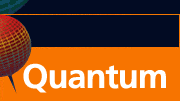CONTACTS
- Coordinator
Adolfo del Campo
-
Quantum Lunch Location:
T-Division Conference Room, TA-3,
Building 123, Room 121
 |


Quantum Institute: Visitor Schedule
The Quantum Lunch is regularly held on Thursdays in the Theoretical Division Conference Room, TA-3, Building 123, Room 121.
The organizing committee includes Malcolm Boshier (P-21), Adolfo del Campo (T-4 & CNLS), Michael Di Rosa (C-PCS), Armin Rahmanisisan (T-4 & CNLS), Changhyun Ryu (P-21) , Nikolai Sinitsyn (T-4), Rolando Somma (T-4), Christopher Ticknor (T-1), and Wojciech Zurek (T-4).
For more information, or to nominate a speaker, contact Adolfo del Campo.
To add your name to the Quantum Lunch email list, contact Ellie Vigil.
Thursday February 13, 2014
12:30 PM - 2:00 PM
Speaker: Rongkuo Zhao (Imperial College, London)
Technical Host: Diego Dalvit
TOPIC: Fluctuation Induced Electromagnetic Interactions between Nanostructures
Abstract
Nanotechnology is the forefront of current research in the US and elsewhere. It has potential for extremely novel applications in bio sensing, imaging, and electronic devices, to name but a few areas. Optical properties of nanostructures have been extensively studied. However, little is understood about mechanical interactions between them. What forces act between them? How strong is the friction when nanostructures are in motion? These interactions are related with quantum and thermal noisy fluctuations that every physical system undergoes. On an electrically neutral surface, fluctuations of charge density can randomly produce temporary charges. When two surfaces approach each other, the instant charges on one surface induce opposite charges on the other. The electromagnetic interactions between these fluctuation-induced charges give rise to attractive force between closely spaced nanostructures – the so called van der Waals force. It plays an important role in surface adhesion and friction, colloidal stability and crystallization, and nanoparticle self-assembly. Remarkably, this is the mechanism for gecko to walk on ceilings. On the other hand, if two surfaces undergo relative lateral motion, charges on one surface cannot follow up the ones on the other due to material resistance. The lateral interactions give frictional forces via the shearing vacuum [1] which, due to the lack of experimental evidence, is still doubted by some theoreticians.
In the first part of my talk, I will present our recent work on calculating van der Waals interactions between metallic nanoparticles using transformation optics [2, 3]. Exact calculation of van der Waals interactions between closely spaced metallic nanoparticles is challenging both numerically and analytically due to strong concentration of electromagnetic fields at the nearly touching gap between them. Transformation optics [4], capable of mapping a small volume into any desired length scale, enables us to shed physical insight into the intricate behaviour of electromagnetic fields in extremely small gaps. Applied it to study the van der Waals interactions, we [2, 3] have obtained not only fast convergence of exact calculations but also very accurate analytical approximations which can be used directly by a broad range of people from all disciplines. In the second part, I will present our recent progress on the van der Waals frictional force. The frictional force acting on a small sphere rotating near a surface was theoretically investigated [5]. The existence of this noncontact friction at zero temperature was confirmed. The surface can enhance the frictional force by several orders of magnitude, compared to that for the sphere rotating in the vacuum. The prominent enhancement and the realistic geometry open up the possibility of experimental verification.
[1] J. B. Pendry, J. Phys. Condens. Matter 9, 10301 (1997).
[2] J. B. Pendry, A. I. Fernández-Domínguez, Y. Luo, and R. Zhao, Nature Physics 9, 518-522 (2013).
[3] R. Zhao, Y. Luo, A. I. Fernández-Domínguez, and J. B. Pendry, Phys. Rev. Lett. 111, 033602 (2013).
[4] A. J. Ward and J. B. Pendry, Journal of Modern Optics 44, 1703, (1997).
[5] R. Zhao, A. Manjavacas, F. J. García de Abajo, and J. B. Pendry, Phys. Rev. Lett. 109, 123604 (2012).
|


